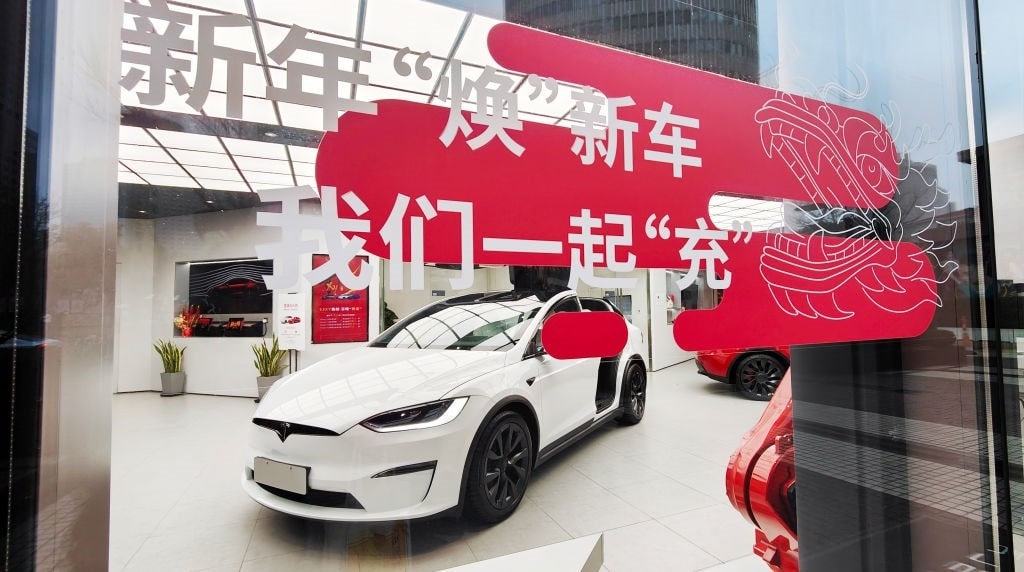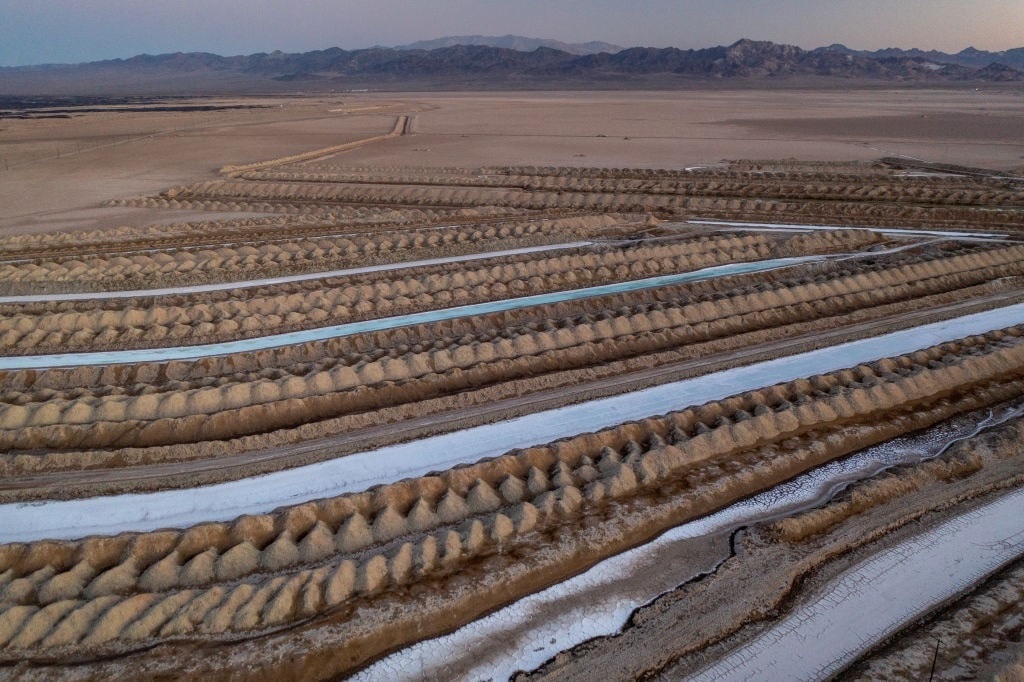A revolutionary new technology to extract precious lithium from brine water is poised to be deployed in the Great Salt Lake in Utah. The element lithium is essential to electric vehicle (EV) manufacturing, for batteries and eventual grid storage capacity. Precious mineral resources will grow in economic importance for many nations, yet their mining and disposal are increasingly proving a tricky political problem.
Revolutionary Extraction Method
The surge in EV production caused lithium prices to soar, boosting many mining industries and attracting venture capital globally. Most of the world’s lithium is mined from underground brine that is pumped to the surface, then stored for months in toxic lakes that evaporate the water and concentrate the lithium for extraction.
 An American company has patented a novel extraction process that eliminates evaporation ponds with reusable ceramic “beads” that absorb the lithium. Waterleaf Resources, a subsidiary of Lilac Solutions, is constructing a facility at Utah’s Great Salt Lake, which it expects will produce 20,000 tons of battery-grade lithium annually. The company’s “proprietary ion-exchange media (IXM)” employs “holy grail” technology in its “mission to scale global lithium production to support the electric vehicle industry and energy transition.” Lilac’s process is far more efficient than conventional methods, returning processed brine water to the Great Salt Lake.
An American company has patented a novel extraction process that eliminates evaporation ponds with reusable ceramic “beads” that absorb the lithium. Waterleaf Resources, a subsidiary of Lilac Solutions, is constructing a facility at Utah’s Great Salt Lake, which it expects will produce 20,000 tons of battery-grade lithium annually. The company’s “proprietary ion-exchange media (IXM)” employs “holy grail” technology in its “mission to scale global lithium production to support the electric vehicle industry and energy transition.” Lilac’s process is far more efficient than conventional methods, returning processed brine water to the Great Salt Lake.
Lilac Solutions’ innovative technology promises a sweet-smelling answer to the significant environmental problems of traditional extraction of lithium from brine, especially in the Great Salt Lake, shriveled by years of severe drought. Waterleaf Resources plans to pump 80,000 gallons of briny water per minute from the lake, all of which will be recirculated back following lithium extraction. No massive lagoons are required.
Some environmental groups, however, have complained that the company’s planned drawdowns of 20,000 gallons daily of additional fresh groundwater positions Waterleaf ahead of farmers and other local land uses.
The China Connection
Lithium price volatility has revealed the seismic economic forces unleashed by the mass production of EVs. China is constructing coal-fired plants to smelt aluminum for EVs and expanding its rare earth mining operations both domestically and abroad. As America is denounced for past colonization, Beijing is securing massive supply lines that permit it to feed its industries, threatening global hegemony in multiple markets.
The largest traditional lithium producers are China, Chile, Australia, and Argentina, while the largest importers are China, Japan, South Korea, and the United States. The Lilac Solutions technology opens the door for national security protection for the United States rather than continued dependency on overseas markets strangled by China. The precious metals nickel, cobalt, and lithium are all vital inputs for the world’s military complex, including the territorial ambitions of China and Russia.
By subsidizing domestic lithium production, China drove up production and thus inventories. As EV sales slid, the price of lithium plummeted some 80%, a drop so precipitous as to make domestic mining and steel operations in Australia unprofitable. Warned the Australian Strategic Policy Institute: “Far from a hypothetical, Beijing has already used its near-monopolistic global supply-chain control of (rare earth elements) to strategic advantage against the US and Japan.” Jamie Seidel at News.com.au reported:
“Beijing’s willingness to subsidise every step of production and bear the environmental fallout of chemical and energy-intensive processes means it’s now the source of about 80 per cent of the rare earths processed worldwide. That includes 90 per cent of lithium, 70 per cent of gallium, and 70 per cent of germanium.”

(CFOTO/Future Publishing via Getty Images)
China does not hesitate to flex this economic muscle to protect its interests – it imposed export restrictions on Australia when that nation called for an international investigation of the source of the COVID-19 pandemic. Conversely, China’s allies will benefit economically from rare material supply lines. Even as American lithium production firms Albemarle Corporation and Piedmont Lithium are laying off workers, Zimbabwe has attracted more than $1 billion in investment from Chinese mining companies to develop its hard-rock reserves.
Recent surges in EV sales in China point toward the eventual absorption of existing lithium stockpiles. The depressed global market has caused production slowdowns and delayed mining expansion, reducing future lithium supply lines. Such pressures suggest Lilac Solutions and its industry-transforming technology will be smelling like a rose. However, potentially intractable problems of EV battery disposal persist.
Disposal Problems Mount
Discovering innovative methods to harvest precious elements does not abate the daunting environmental disasters of EV manufacturing that include coal-fired plants to smelt aluminum, innumerable chemical inputs for car amenities, and disposal of toxic batteries. A 2020 Institute for Energy Research commentary claimed:
“It is estimated that between 2021 and 2030, about 12.85 million tons of EV lithium ion batteries will go offline worldwide, and over 10 million tons of lithium, cobalt, nickel and manganese will be mined for new batteries.
“Environmentalists expressed unfounded concerns about fracking, but they need to be worried about replacing fossil fuels in the transportation and electric generating sector with electric vehicles and renewable energy where lithium, cobalt and other critical metals are needed to produce these technologies.“
The world has so far “electrified” an estimated 3% of its global vehicle fleet – there is a mountainous amount of mining and manufacturing urgently required to achieve “net-zero.” The manufacturing demand is never-ending, but not costless. Solar panels and EVs have temporary “useful lives,” their obsolescence is inevitable, if not planned. Recycling and disposal of aging solar panels are environmentally nightmarish; EV batteries are worse.
‘Clean Energy Storage’ Is Filthy
Batteries labeled “clean energy storage” are anything but clean. Diverse battery designs and chemical composition combined with strong glues eliminate uniformity in processing. Like stalled recycling efforts of plastics, metals, and glass, there is currently no system to recycle precious metals from most batteries efficiently. Pyrometallurgy burns spent batteries into a slag to extract desired materials. Dissolving batteries in acids is called hydrometallurgy. Neither is cost-competitive with newly minted batteries.
Neither scientists nor politicians have ensured efficient battery recycling on any scale. It may be decades before the world resolves the hurdles – if ever. IXM technology that filters lithium from brine water in the Utah desert does not address the future environmental liability of toxic chemicals from the renewable (“clean”) energy industry. Ion-exchanging ceramic beads may be the Holy Grail for lithium mining, but regressive EVs and their intractable battery disposal problems are not panning out to be as eco-salvific as advertised.




